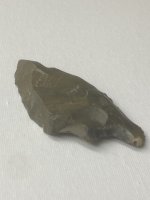starsplitter
Sr. Member
- Jan 20, 2007
- 434
- 31
Newbie here. Posted this in another section but recieved very little feedback. Hoping to improve it here. I am hoping for opinions as to the viability of dredging.
We just came back from a river located at about 3,500 feet in southern Ecuador. Relatively wide. Average depth probably about 1-3 meters. We sampled with a pick, shovel, bucket, classifier, and pans.
The sampling was along the bank, in some bedrock crevices (ledges at flood level), and in the water along the shallows in likely areas. We sampled four locations along about 200 meters of river. All on the same side.
We filled 8 buckets two thirds full with classified material, we got a little less than a gram and numerous small rubies (the black sand shimmered in red). Also, the pans often turned up a faint "glow" along the edge of the black sand. Earlier, in the same area, was found a gram plus sized nugget up on the shelf.
Please give opinions as to worthiness of the sampling and what it indicates. We are considering using a dredge. Has anyone heard of a Vera dredge? Thank you.
We just came back from a river located at about 3,500 feet in southern Ecuador. Relatively wide. Average depth probably about 1-3 meters. We sampled with a pick, shovel, bucket, classifier, and pans.
The sampling was along the bank, in some bedrock crevices (ledges at flood level), and in the water along the shallows in likely areas. We sampled four locations along about 200 meters of river. All on the same side.
We filled 8 buckets two thirds full with classified material, we got a little less than a gram and numerous small rubies (the black sand shimmered in red). Also, the pans often turned up a faint "glow" along the edge of the black sand. Earlier, in the same area, was found a gram plus sized nugget up on the shelf.
Please give opinions as to worthiness of the sampling and what it indicates. We are considering using a dredge. Has anyone heard of a Vera dredge? Thank you.



